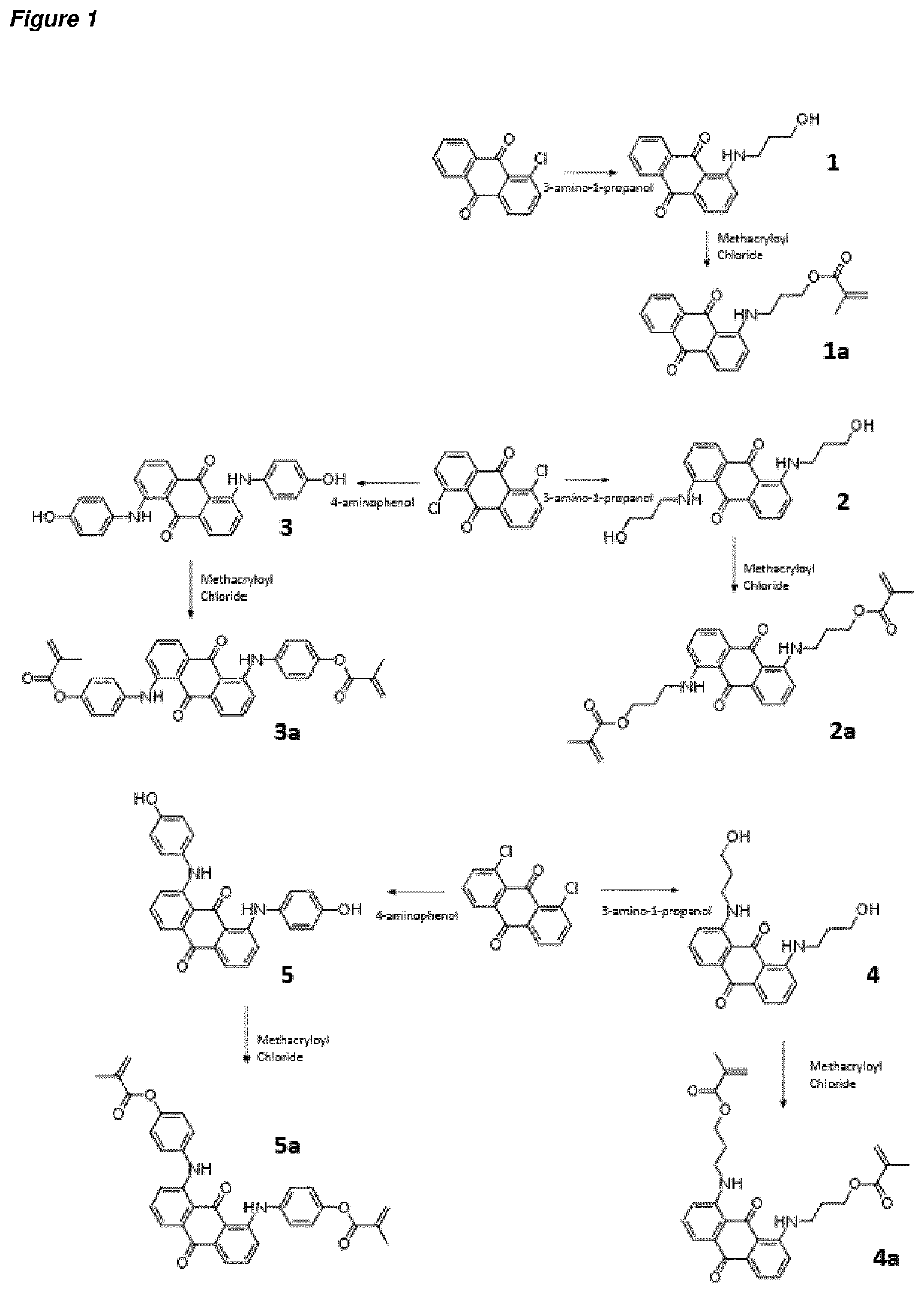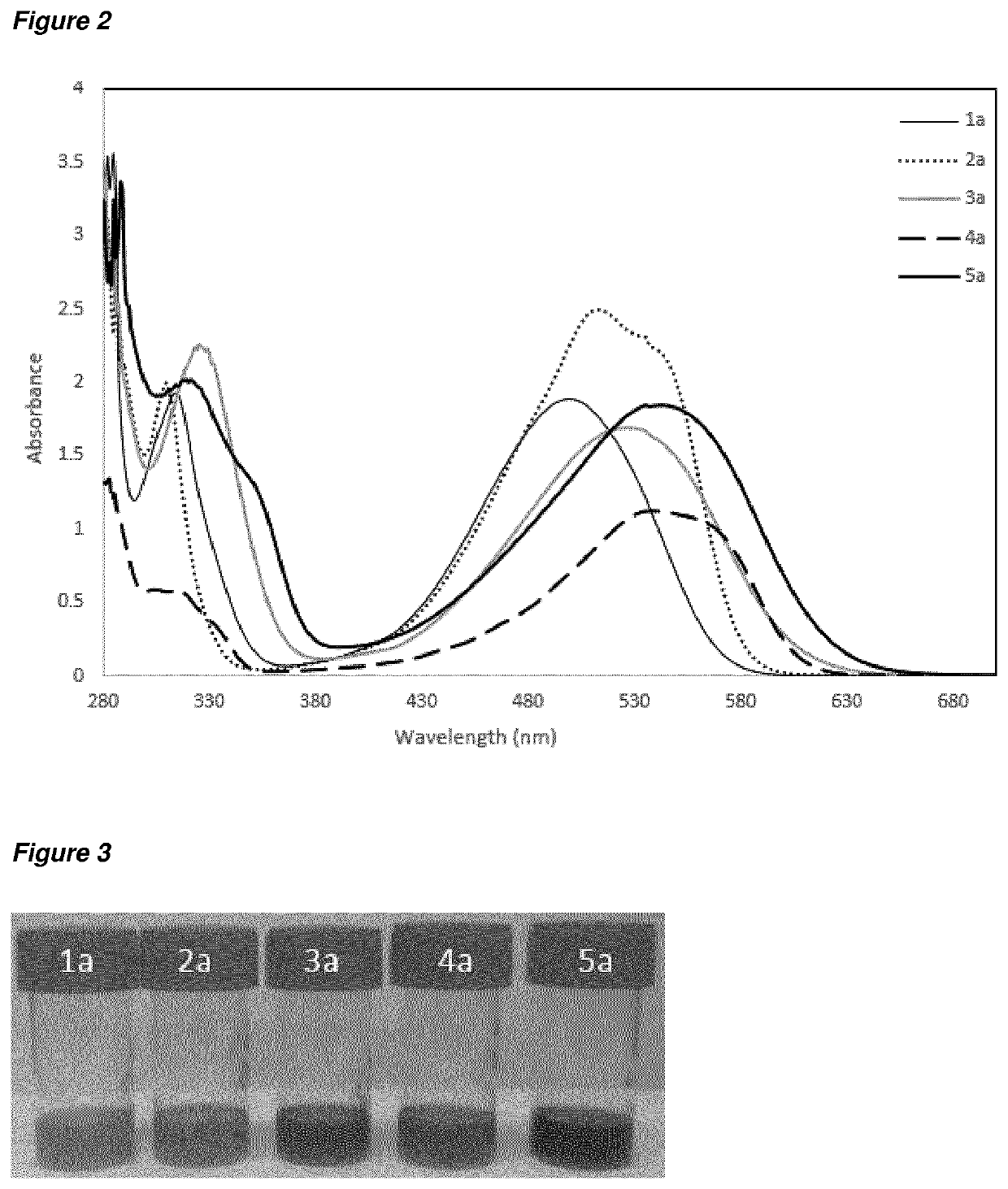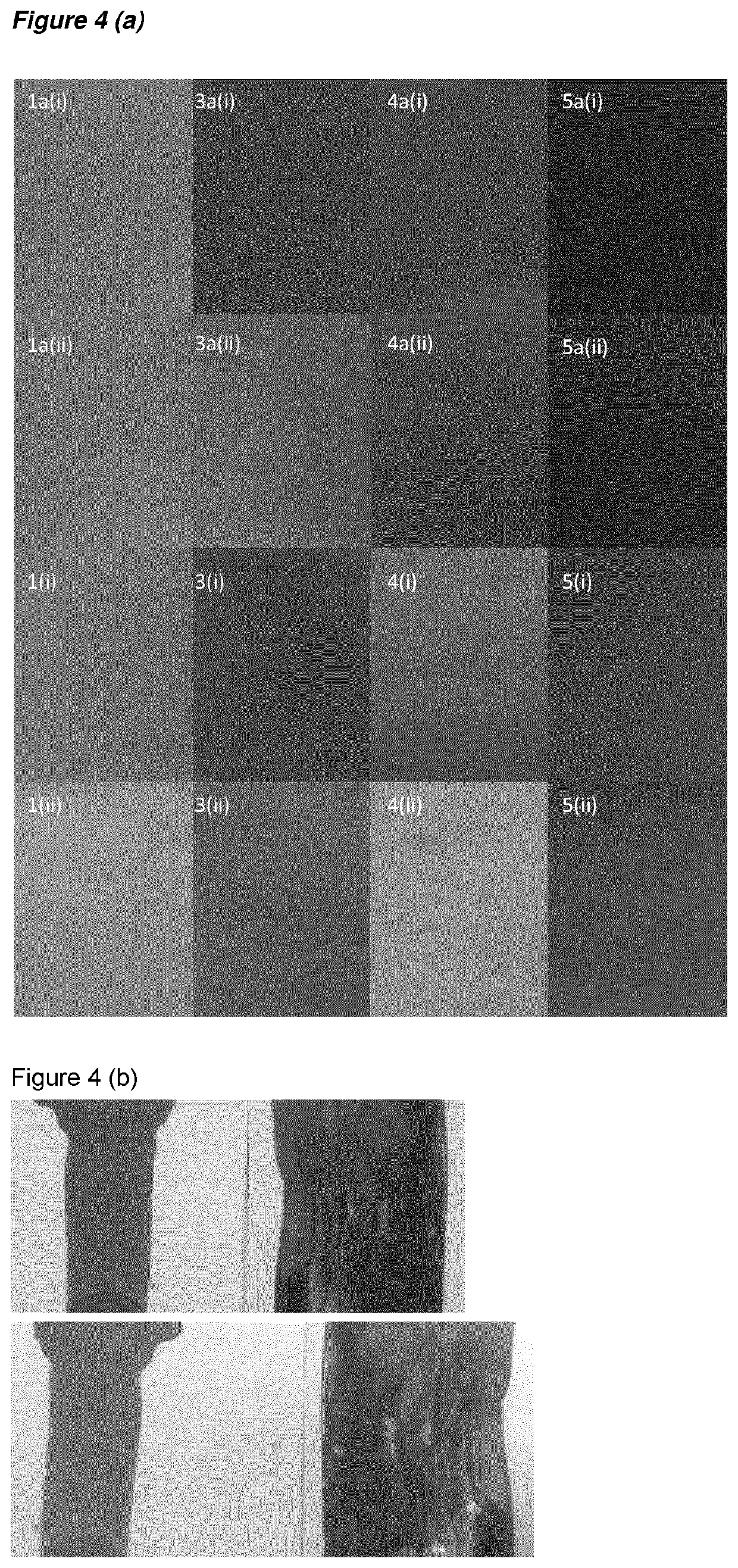Curable Ink Composition
- Summary
- Abstract
- Description
- Claims
- Application Information
AI Technical Summary
Benefits of technology
Problems solved by technology
Method used
Image
Examples
example 1
of Methacrylated Anthraquinone Compounds
[0239]Five different methacrylated anthraquinones were synthesised, starting from commercially-available chloroanthraquinones. The reaction scheme for these syntheses is shown in FIG. 1. In each case, the starting chloroanthraquinone reacted with a suitably functionalised amine to produce the hydroxylated compounds 1 to 5. The hydroxyl groups were subsequently functionalised with methacryloyl chloride to give compounds 1a-5a. The structures of these were confirmed by 1H NMR, as detailed in the experimental section.
[0240]The UV-vis spectra of compounds 1a to 5a in solution are shown in FIG. 2. The overall form of the spectrum is similar for each compound; subtle differences in the width and Amax of the strongest absorption give rise to variations in the colour of the materials, as shown in FIG. 3.
Synthesis of 1-[(3-hydroxypropyl)amino]anthracene-9,10-dione, 1
[0241]1-chloroanthraquinone (1 g, 4.1 mmol) was dissolved with propanolamine (12.4 mmol...
example 2
tion into Crosslinked Films
[0252]The methacrylate-functionalised dye compounds 1a to 5a were dissolved in a carrier monomer and optionally a further solvent.
[0253]Dipropylene Glycol Diacrylate (DPGDA) was used for the carrier monomer.
[0254]A stock solution was formed from DPGDA, containing 2,4,6-trimethylbenzoyl-diphenyl-phosphine oxide (Omnirad TPO) at 10% w / w and benzophenone at 5% w / w.
[0255]Ink solutions of the invention were prepared by combining the stock solution with compounds 1a, 3a, 4a or 5a. These will be referred to as solutions 1a, 3a, 4a and 5a respectively
[0256]Compounds 4a and 5a were dissolved in DPGDA at 5 wt %. Compounds 1a and 3a were dissolved in DPGDA at 5 wt % with 5 wt % of dichloromethane.
[0257]Comparative solutions were made using the hydroxylated anthraquinone compounds 1, 3, 4 and 5 referred to as comparative solution 1, 3, 4, and 5 respectively. Compounds 4 and 5 were dissolved in DPGDA at 5 wt %. Compounds 1 and 3 were dissolved in DPGDA at 5 wt % with 5...
example 3
st Testing
[0259]Films of the solutions 1a, 3a, 4a and 5a produced in Example 2 were prepared on a coated substrate (Sheen card). These films were subsequently irradiated by UV. Curing of films was carried out by placing the uncured samples on a 2 m slider underneath a Baldwin iron-doped mercury arc lamp (model CA300) and a Phoseon 20 W / cm2 LED lamp at 395 nm (model FP300 225X20WC395). For standard curing conditions the arc lamp was set to 60% and the LED lamp set to 50%, with the slider passing under the lamps once at a speed of 50 m / min. These curing conditions deliver a UVA dose of about 175 mJ / cm2.
[0260]The first and second rows of photographs in FIG. 4(a) show the colours of these films before and after UV irradiation respectively. The methacrylated dyes do change during this curing process, but they remain deeply coloured.
[0261]As a control experiment, these films were compared to films produced using comparative solution 1, 3, 4, 4-1 and 5.
[0262]The third and fourth rows of ph...
PUM
| Property | Measurement | Unit |
|---|---|---|
| Weight | aaaaa | aaaaa |
Abstract
Description
Claims
Application Information
 Login to View More
Login to View More - R&D
- Intellectual Property
- Life Sciences
- Materials
- Tech Scout
- Unparalleled Data Quality
- Higher Quality Content
- 60% Fewer Hallucinations
Browse by: Latest US Patents, China's latest patents, Technical Efficacy Thesaurus, Application Domain, Technology Topic, Popular Technical Reports.
© 2025 PatSnap. All rights reserved.Legal|Privacy policy|Modern Slavery Act Transparency Statement|Sitemap|About US| Contact US: help@patsnap.com



